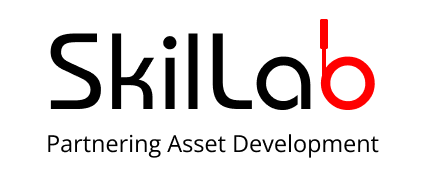In today’s competitive talent marketplace, the role of a recruiter has reached a critical inflection point.
There are two types of recruiters:
- One just sends lots of resumes to hiring managers without really checking if they match the job.
- The other is a helpful advisor who learns what the company truly needs and finds strong, well-matched candidates.
This change is more than just a new title. It shows a new way recruiters can work and bring better results in a more complex hiring world.
Sticking to the old way of just sending resumes can cause problems beyond imagination. Hiring managers have grown weary of sifting through piles of mismatched profiles.
Organizations struggle to identify whether they need more candidates or simply fewer, better-aligned ones. Also, many recruiters don’t feel confident explaining why their resumes are a good match.
This article explores why and how recruiters can transcend their transactional vendor status to become trusted advisors who deliver quality, reduce hiring managers’ workloads, and take ownership of the cultural fit conversation.
Strategic Recruitment vs. Transactional Hiring: Why Culture Fit Comes First
The key difference between transactional recruitment and strategic recruitment lies in how well a recruiter understands the hiring requirements beyond just the job description.
Traditional recruiters quickly look at job descriptions, compare basic skills, and send out resumes fast. However, strategic talent advisors think more carefully. They try to find people who not only fit the job but also the company’s values, culture, and future plans.
This process starts with a structured, 30-minute “culture deep dive” with the hiring manager. Using tools like ChatGPT, PerplexityAI, or DeepSeek, recruiters guide this conversation with high-impact questions designed to uncover the organization’s true identity and role expectations. They ask:
“What is your organization best known for?”
“Describe your top performer in three words.”
“Can you share a recent hire who didn’t work out and why?”
In addition to these qualitative insights, strategic recruiters also gather critical details about salary bands, reporting structures, and the competitive landscape, ensuring a well-rounded understanding of the hiring context.
One of the most powerful outcomes of this discovery process is the development of a “culture fit sheet.” This tailored document outlines the soft skills, personality traits, and organizational behaviors that define success within a specific company.
Sharing this with candidates early in the process empowers them to self-assess their compatibility, saving time and improving alignment from the outset.
For instance, when supporting an InsureTech startup searching for business-minded developers, we added a “domain-specific” filter to their culture fit sheet. Candidates who didn’t mention “projects” or failed to show appreciation for “business process knowledge” were filtered out early.
This helped us identify talent who not only possessed strong technical skills but also understood the commercial realities of the business—a must-have for thriving in that environment.
The Art of Decisive Screening: Moving Beyond “Maybe” Candidates
Strategic recruiters recognize that their primary value lies not in the quantity of resumes submitted but in their ability to confidently present only the most suitable candidates.
This requires developing a disciplined screening methodology that produces clear “Hell Yes” or “No” decisions, effectively eliminating the “maybe” category that consumes precious organizational resources.
The “Selection Confidence” Test: A Recruiter’s Gut Check
The “Selection Confidence” test represents a critical self-assessment tool in this process. Before submitting a candidate, strategic recruiters ask themselves:
“Do I see this person as a selected candidate who will ultimately join the organization? Why?”
Any hesitation signals a mismatch that warrants rejection. This honest self-assessment prevents the all-too-common practice of submitting borderline candidates “just to see what happens”, a habit that diminishes recruiter credibility and wastes organizational resources.
Culture Fit Video Questions: A Window Into Motivation
Beyond technical skills, strategic recruiters dig deeper by integrating culture-fit assessments into the early stages of the screening process.
For instance, asking candidates to answer 2-3 culture-fit questions via video, like:
“Describe a time you disagreed with a manager.”
“Why do you think the product would work in the market?”
These questions provide valuable insights into their genuine interest and engagement. Candidates who cannot articulate thoughtful responses likely haven’t invested the necessary effort to understand the role or organization.
Blending Technical and Behavioral Evaluations
Combining technical assessments with behavioural evaluations creates a powerful screening mechanism.
Quick, requirement-specific assessments, such as MCQ coding challenges for IT roles, paired with scenario-based culture questions. They efficiently identify candidates who possess both the technical capabilities and soft skills necessary for success.
This comprehensive approach to assessment was demonstrated when a Conference Management PaaS organization reduced their interview rounds from five to two. This was possible because our screening process effectively identified candidates who not only excelled technically but also demonstrated strong process adherence and ownership capabilities while working remotely.
Simplify Hiring with Smart Automation
A smart recruiter knows that technology helps people do their jobs better and that it doesn’t replace them.
By using the right tools, recruiters can save time on simple tasks and spend more time on important work that needs human judgment.
AI Screening Tools: Fast, Consistent, and Data-Driven
AI screening tools, such as ChatGPT with resume scoring prompts, can quickly analyze candidate profiles against predetermined criteria, highlighting potential matches and flagging potential concerns.
These tools excel at processing large volumes of information consistently, eliminating the fatigue-induced errors that plague manual reviews.
Automating Candidate Pre-Qualification
AI voice calling tools and chatbots further streamline the initial candidate engagement process. These automated systems can efficiently collect hygiene details, gauge basic interest, and warm up candidates with preliminary questions like
“Does hybrid work for you?” or “What are your salary expectations?”
This pre-qualification ensures that human recruiters invest their time only in candidates who meet fundamental requirements.
Email Automation: Smart Inbox Sorting
Automated email screening represents another opportunity to enhance efficiency. Recruiters can set up systems to automatically check resumes sent to special email addresses. These systems can pull out key details and rank candidates based on set rules.
This helps recruiters quickly find the best applicants without going through each resume by hand.
Technology as a Partner, Not a Replacement
However, a critical warning accompanies this technological integration: these tools must serve as assistants, not replacements.
The strategic recruiter uses technology to free up time for uniquely human activities like relationship building, investigating candidate motivations, engaging candidates through strategic sourcing, filtering out poor-fit candidates, and promoting the employer brand.
Technology handles the data processing, while human judgment addresses the nuanced evaluation that determines true organizational fit.
Community-Led Hiring: A Smarter Way to Attract and Engage Talent
The difference between a transactional recruiter and a strategic talent advisor is clear: one collects resumes; the other builds thriving talent communities.
This shift marks a fundamental evolution in recruitment from treating candidates as one-time transactions to engaging them as long-term members of a professional ecosystem.
From Static Databases to Dynamic Talent Ecosystems
Strategic recruiters create and nurture niche communities on platforms like Slack, WhatsApp, or LinkedIn. These might focus on specific professional intersections, such as JavaScript Developers in E-commerce Domain or Cloud Architects in Healthcare.
By regularly sharing industry trends, facilitating connections between members, and providing genuine value, recruiters establish themselves as trusted community leaders rather than opportunistic headhunters.
Events & Engagement: Boosting Visibility and Value
Community building goes beyond digital interaction. Strategic recruiters stay visible by participating in or hosting local meetups and national industry events like “AI in Talent Acquisition” or “Tech in Healthcare.”
These activities attract professionals with niche as well as broad skills, expanding the recruiter’s network beyond active job seekers.
Candidate Nurturing: Staying Top-of-Mind Year-Round
Staying in touch with past candidates every 3 to 6 months, even if they’re not looking for a job, helps build strong connections.
This regular follow-up sets community-focused recruiters apart from those who only reach out when they need to fill a job.
These check-ins might include questions like “How’s the new role going? Facing any challenges?” and naturally flow into discussions about potential referrals or new opportunities.
This ongoing dialogue ensures that when needs arise, the recruiter has an engaged network ready to activate.
Industry Involvement: Expanding Reach and Credibility
Active membership in industry associations provides another avenue for community expansion. By participating in these professional groups, recruiters gain credibility and access to specialized talent pools that remain invisible to less engaged competitors.
Real-World Impact: Fast, Targeted Hiring
To tell you my personal experience, the power of this community-based approach was demonstrated when a MarTech organization suddenly needed a Business Development and Key Account Manager.
By tapping into a community we had engaged with consistently for two years, we identified and hired the perfect candidate in just seven days- an outcome impossible through traditional transactional recruitment methods.
Think Like a Consultant, Hire Like a Pro
Organizations increasingly value recruiters who function as strategic advisors rather than passive order-takers. This consultative approach requires professional courage, the willingness to push back when necessary, and offer constructive alternatives that better serve organizational objectives.
Challenging the Brief: When Professional Courage Matters
Being a consultative recruiter means having the confidence to challenge unrealistic expectations. For example, when a hiring manager requests “10 years of experience in a 5-year-old technology” or insists on “a Lead UI Developer fluent in outdated frameworks,” a strategic recruiter steps in.
Rather than blindly executing the request, they explain why such criteria are red flags for qualified talent and more importantly, they offer practical alternatives that balance technical needs with market realities. This consultative approach builds trust and ensures hiring efforts aren’t wasted chasing unicorn candidates who don’t exist.
Sharing Market Intelligence: Positioning Yourself as a Strategic Partner
Keeping organizations informed about market trends and benchmarks establishes recruiter credibility.
Sharing insights like “Candidates who prioritize learning opportunities stay twice as long” or “Highlighting mentorship programs significantly increases engagement” positions the recruiter as a knowledgeable advisor rather than a mere resume courier.
Perhaps most valuable is the strategic recruiter’s ability to anticipate sourcing challenges before they arise.
By proactively identifying potential disconnects between market realities and job specifications, they help organizations develop realistic parameters that align with available talent pools. This foresight prevents the frustration and wasted resources that come from pursuing impossible candidate profiles.
Recruitment Metrics That Matter: Tracking What Drives Quality Hires
The evolution from transactional to strategic recruitment requires a corresponding shift in performance metrics. Moving beyond simplistic “CVs sent” counts, strategic recruiters track indicators that truly reflect their value contribution.
The Quality Ratio: Focus on Fit, Not Volume
The Quality Ratio, the percentage of submitted candidates who progress to hire, provides a powerful indicator of screening effectiveness.
Strategic recruiters aim for rates above 50%, demonstrating their ability to accurately assess fit and present only genuinely viable candidates. This contrasts sharply with transactional recruiters, who might submit dozens of marginally qualified candidates hoping a few might progress.
Effective Hiring Begins with Better Planning and Process
The Planning and Organizing Effort Score acknowledges that effective recruitment invests heavily in upfront work.
Analysis, planning, and screening tasks should consume approximately 80% of the recruiter’s effort, with submission, interview coordination, and selection processes accounting for the remaining 20%.
This weighted approach recognizes that thoughtful preparation yields better outcomes than rushed submissions.
Retention Rate: Measuring Long-Term Impact
Retention Rate metrics extend the recruiter’s accountability beyond the hire date. It tracks how many placements remain with the organization after 12+ months. This metric recognizes that quality recruitment manifests in long-term organizational fit, not just initial placement.
Case in Point: Metrics That Deliver Real Results
The power of these strategic metrics was demonstrated in a case where we hired 27 employees in just 70 days for a key RPO client in the automotive technology domain.
By focusing on “Organization Hours Saved” and “Candidate Fit Score” rather than raw submission numbers, we delivered specialized talent including Tech Leads, Senior Embedded Developers, Hardware Design Engineers, and other highly specialized roles with remarkable efficiency.
Conclusion: The Future Belongs to the Strategic Recruiter
The gap between transactional resume dumping and strategic talent advisory continues to widen. Organizations increasingly recognize the difference between recruiters who add to their workload and those who reduce it through thoughtful curation and insightful guidance.
For recruiters seeking to evolve their practice, a simple diagnostic exercise provides clarity: audit your last ten placements and calculate what percentage required extensive screening by the hiring manager. If this figure exceeds 50%, you’re operating in the transactional space—leaving value (and potentially higher fees) unrealized.
The future of recruitment doesn’t belong to those who can submit the most resumes or maintain the largest databases. It belongs to strategic advisors who build trust through consistent delivery of quality candidates who match both technical requirements and cultural expectations. By understanding organizational culture, implementing decisive screening processes, leveraging technology appropriately, building talent communities, providing consultative guidance, and measuring meaningful outcomes, recruiters can transform their practice from transactional order-taking to strategic partnership.
This evolution requires courage, investment, and a willingness to challenge established patterns. But for those who successfully make the transition, the rewards include deeper client relationships, improved placement outcomes, enhanced professional satisfaction, and the opportunity to truly impact organizational success through strategic talent acquisition.
About the Author: This article is written by a recruitment professional with 14 years of experience helping over 50 recruiters transition from “spray and pray” approaches to precision hiring strategies that deliver measurable organizational value.


